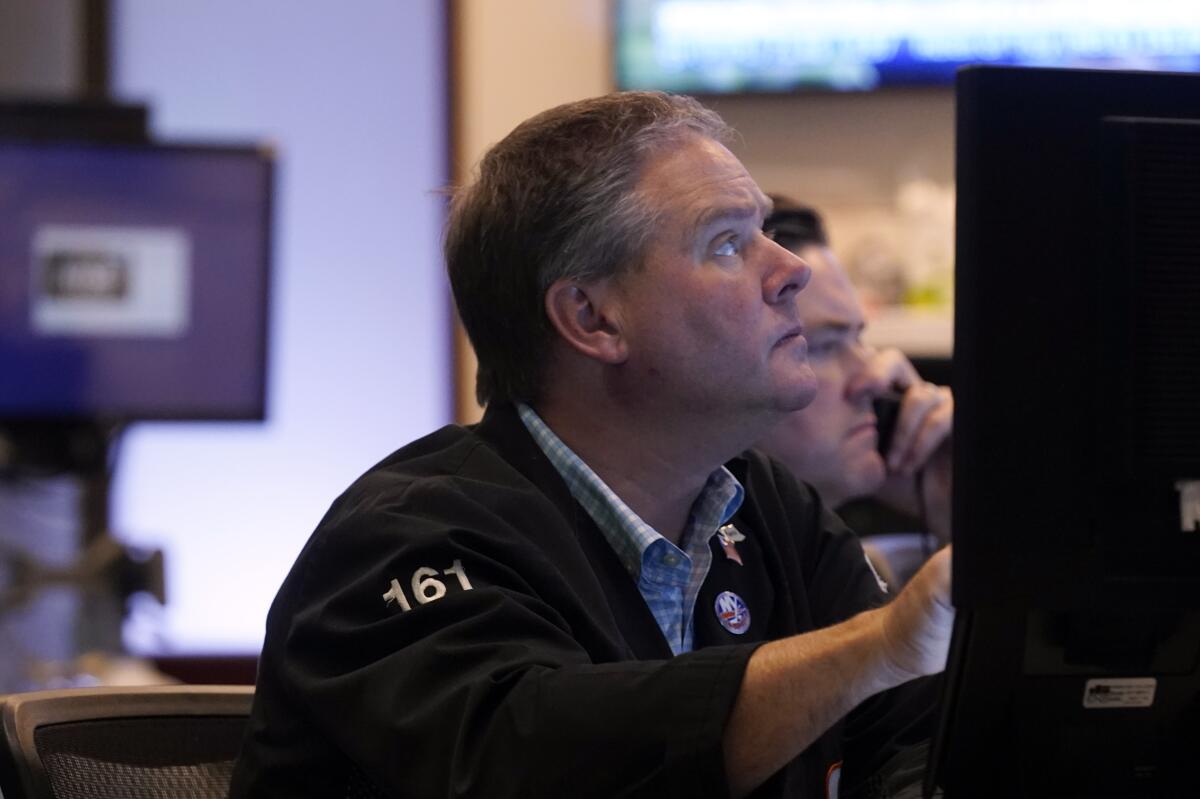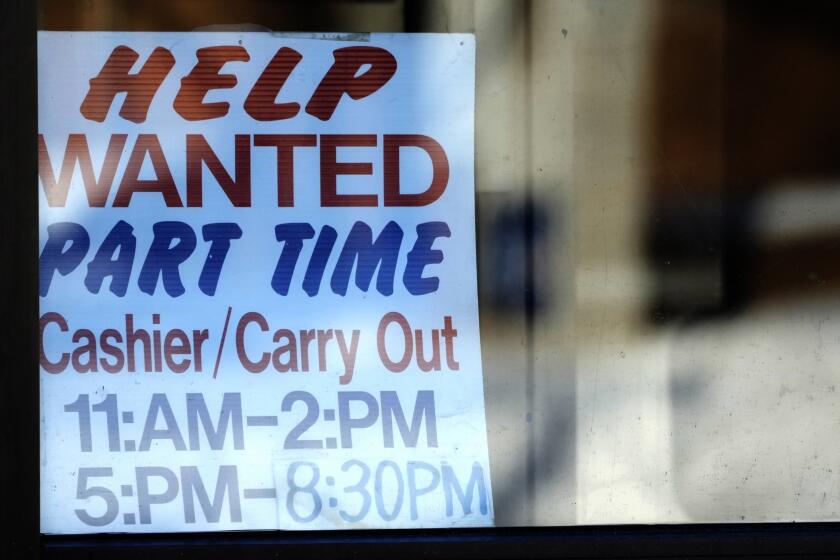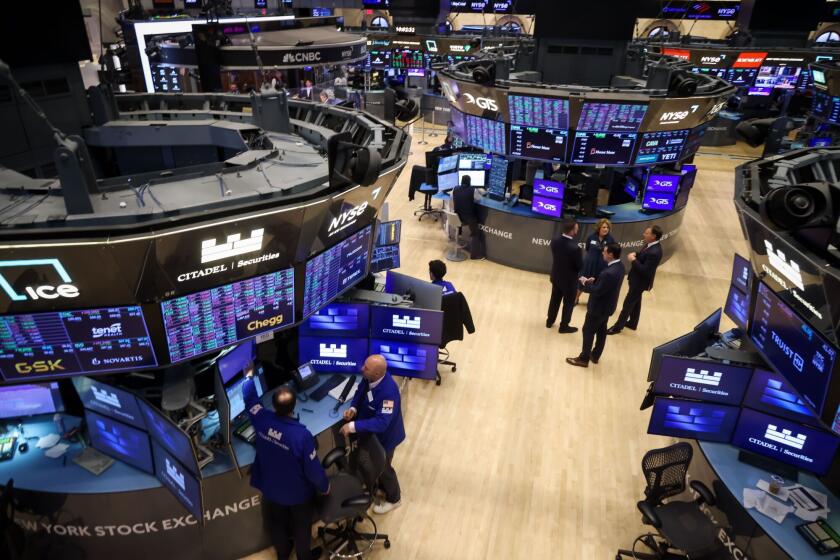A raucous week for Wall Street closes with a quiet, mixed finish

- Share via
Wall Street’s latest winning week closed with a mixed finish Friday after stronger-than-expected profit reports from several big U.S. companies.
The Standard & Poor’s 500 slipped 4.62 points, or 0.1%, to 4,505.42 to edge back from its highest closing level since April 2022. The Dow Jones industrial average rose 113.89 points, or 0.3%, to 34,509.03, and the Nasdaq composite fell 24.87 points, or 0.2%, to 14,113.70.
Insurance giant UnitedHealth Group rallied 7.2% after it said profit growth during the spring was better than feared. It also raised the bottom end of its forecast for earnings for the full year.
JPMorgan Chase rose 0.6% after it said its profit during the spring grew by more than expected thanks in part to its acquisition of the troubled First Republic Bank. It had been up more in the morning, but it faded through the day like the broader market. Wells Fargo likewise swung to a drop of 0.3% from an earlier gain after it reported stronger-than-expected profit for the second quarter.
Helping to drag down Wall Street was State Street, which dropped 12.1% after reporting slightly weaker revenue than expected for the latest quarter, though its profit topped forecasts.
Have you been handed a pink slip? Job hunts are stressful and time-consuming, and you want to be smart with your money. Here’s what to do next.
The earnings reporting season is just getting underway, and Wall Street’s expectations are low. Analysts are forecasting the worst drop in earnings per share for S&P 500 companies since the spring of 2020. If they’re right, it would also mark a third straight quarter in which profits sank.
Such expectations are key for financial markets because one of the biggest factors that set a stock’s price is how much profit a company produces. Wall Street nevertheless has rallied hard this week and closed out its seventh winning week in the last nine because of rising optimism for the other major lever that sets stock prices: how much investors are willing to pay for each dollar of corporate profits.
Two reports this week showed that inflation continued to cool across the U.S. economy in June. That bolstered investors’ hopes that the Federal Reserve is close to feeling comfortable enough to halt its blistering campaign to raise interest rates.
The Fed has already raised its federal funds rate to a range of 5% to 5.25%, up from virtually zero early last year. High rates undercut inflation by slowing the economy and putting downward pressure on prices for stocks and other kinds of investments.
The expectation is still for the Fed to raise rates at its next meeting in two weeks. But traders are largely betting on that being the final increase of the cycle.
Any stigma of buying fashion secondhand is gone. Shoppers are running mini resale businesses as the investment value of certain luxury brands has soared.
Treasury yields rose Friday, paring some of their sharp tumble from earlier this week.
The 10-year Treasury yield rose to 3.82% from 3.77% late Thursday. But it’s still well below the 3.98% mark it sat at late Tuesday, before the inflation reports were released. The 10-year yield helps set rates for mortgages and other important loans.
The two-year Treasury yield more closely tracks expectations for Fed action, and it’s at 4.73%, down from 4.89% late Tuesday.
Yields rose after a report Friday suggested consumers are feeling much better about the economy thanks to slower inflation and a still-solid job market. A preliminary reading on a University of Michigan survey showed consumer sentiment at its highest level since September 2021, though lower-income consumers weren’t feeling as positive.
Solid spending by consumers has been one of the main pillars keeping the U.S. economy out of a recession. They’ve kept spending despite high interest rates as employers have continued to hire more workers.
A look beneath solid headline jobs numbers shows some cracks are starting to form in the U.S. labor market.
The survey also suggested consumers aren’t raising their expectations for upcoming inflation much. The Federal Reserve has been adamant about wanting to avoid a vicious cycle in which expectations for high inflation drive behavior that only worsens it.
The big recent gains for stocks on Wall Street have some critics cautioning investors not to get carried away by hopes for what’s called a “soft landing,” when high inflation can be vanquished without a painful recession.
“U.S. data has undoubtedly been encouraging, and the Federal Reserve’s likelihood of staging a soft landing improves with every data point demonstrating resilient growth and falling inflation,” said Solita Marcelli, chief investment officer, Americas, for UBS Global Wealth Management.
But she said she still prefers safer, high-quality bonds over stocks in part because stock prices have climbed so quickly and set the bar higher for performance in the second half of the year. She also said growth for the U.S. economy could still fall close to zero later this year, even as inflation eases.
Hopes for a more restrained Fed also have helped stocks worldwide to strengthen this week, though markets abroad were mixed Friday.
AP writer Yuri Kageyama contributed to this report.
More to Read
Inside the business of entertainment
The Wide Shot brings you news, analysis and insights on everything from streaming wars to production — and what it all means for the future.
You may occasionally receive promotional content from the Los Angeles Times.













